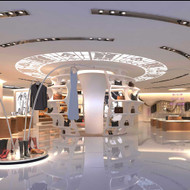Retail Lighting Do’s and Don’ts: Tips for 2023 and Beyond
Retail Lighting Do’s and Don’ts: Tips for 2023 and Beyond
Did you know that the lighting in your store can affect your customers’ shopping habits?
In fact, a study by Lux showed that well-placed retail store lighting can help guide customers through the space and increase the average spend per customer. One retailer even saw a 12% increase in sales after installing LED retail lighting.
Lighting design should therefore be a key part of your sales strategy. In this article, we’ll go through the necessary steps of creating a retail store lighting plan and show you the main do’s and don’ts. Keep reading to discover the most effective retail lighting ideas and best practices.
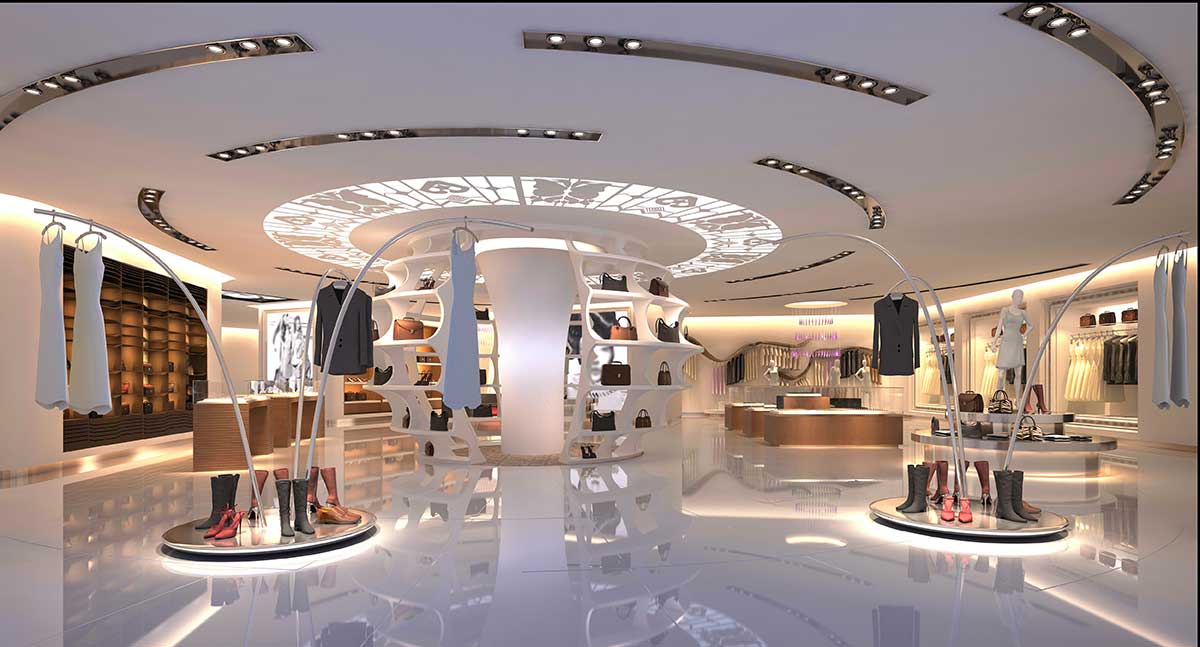
Types of Retail Store Lighting
First of all, you need to know the different types of retail lighting. To create the best lighting plan, you’ll need to mix and match these lighting types to welcome your customers, make them feel comfortable and guide them to the right products. Here’s what you need to know:
Ambient Lighting
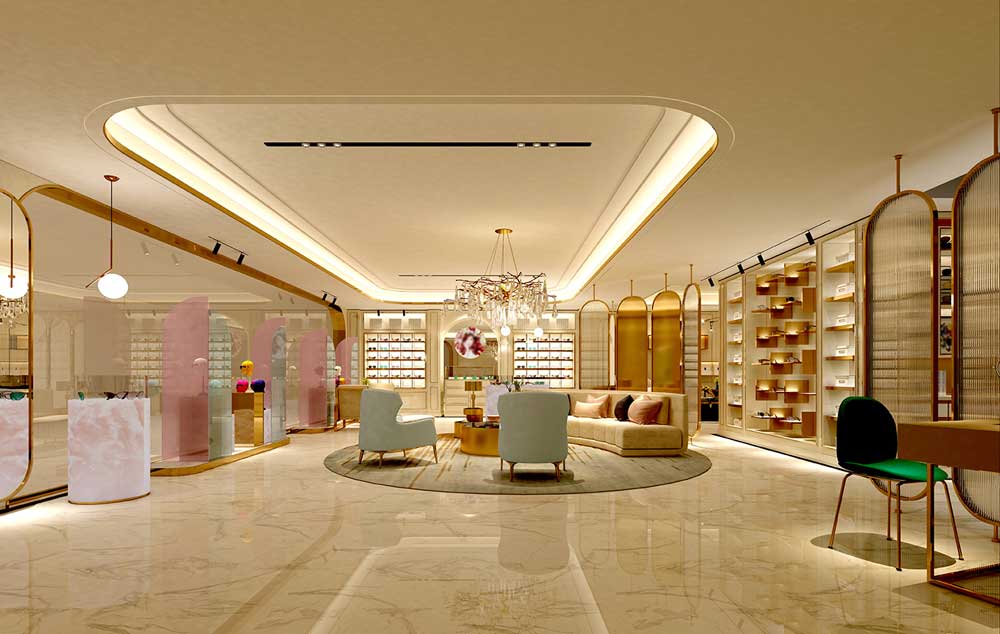
The first and most recognisable form of lighting is ambient lighting. This is the store’s main lighting source, providing consistent illumination for the entire floor space. Ambient lighting should be uniform and provide the exact right amount of light - too much ambient light can create a harsh atmosphere, but too little can make your store look dark and drab.
Accent Lighting
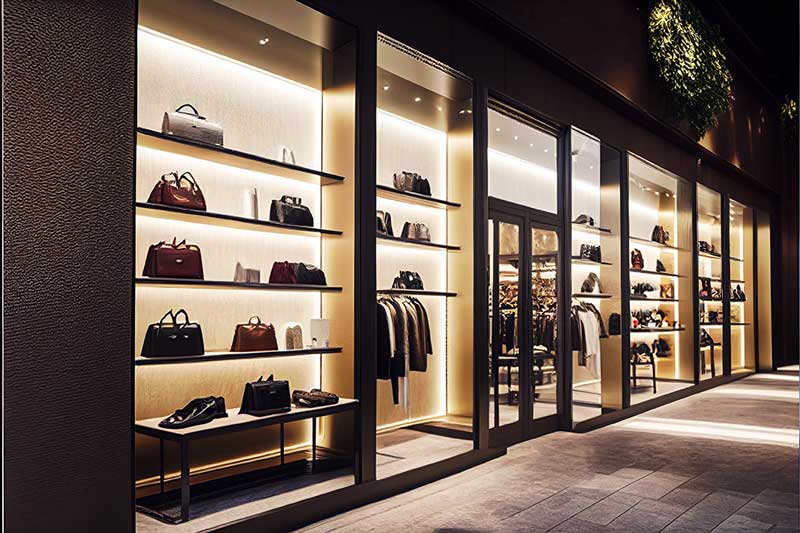
Unlike ambient lighting, accent lighting isn’t intended to illuminate the whole room. Instead, accent lighting highlights specific areas and features in order to draw people’s attention. In a retail setting, accent lights are commonly used to draw the customer’s focus towards particular products, such as new releases, items on offer and the most popular products.
Track lights, spotlights and recessed lights are all great options for ambient lighting, but if you want something a bit more interesting and modern, LED strip lights are fantastic when used for under-shelf lighting. LED backlighting can add a futuristic touch when you want to highlight a frame or poster.
Task Lighting
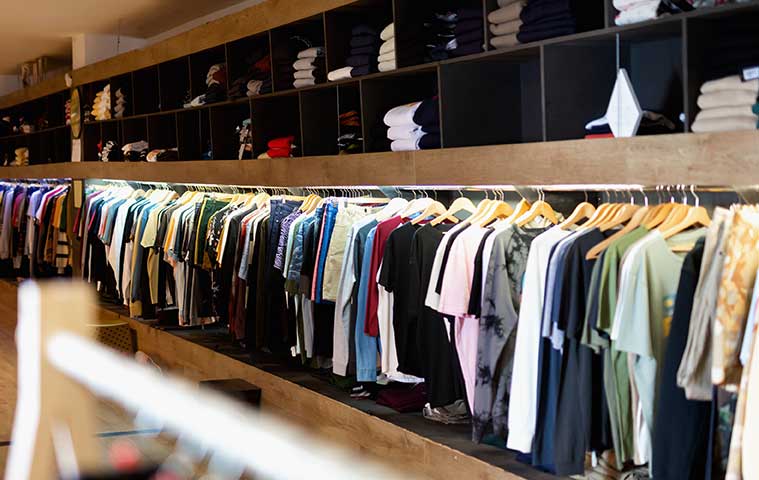
Task lighting is similar to accent lighting but not quite so focused. As the name suggests, task lighting is designed to provide light for a particular task. It supplements your ambient lighting to ensure you have enough brightness when performing actions that require concentration and visibility.
For example, in retail stores, task lighting is extremely beneficial around the tills, in back offices, in storage rooms and in changing rooms. Make sure you have appropriate task lighting in all of these areas.
Decorative Lighting
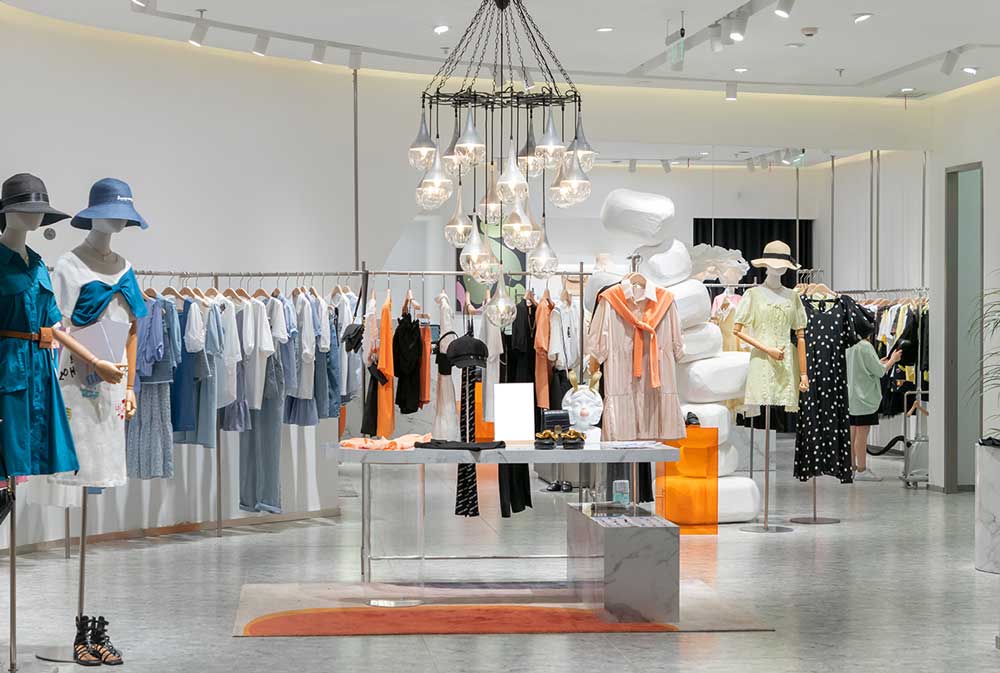
The final type of retail store lighting is decorative lighting. Although we often view lighting as utilitarian, decorative lighting emphasises the aesthetic possibilities of lighting fixtures, which can intrigue customers and encourage them to enter your store. Some examples of decorative lighting include ornate chandeliers, experimental designs, LED neon lights, Christmas fairy lights and LED festoons. You can turn your decorative lighting into a centrepiece within your store to add visual interest, or you could create enticing window displays that catch people’s attention in the street.
Types of Light Bulbs
Next, you’ll need to choose the type of light bulb you’ll use in your store. This may seem like a trivial detail, but your choice of light bulb can actually have a huge impact on both your customers’ behaviour and your running costs. These are the main types of bulbs you can use in retail settings:
Fluorescent Lighting
Traditionally, fluorescent lights were commonly used in retail spaces and other commercial settings due to their bright light, relatively low cost and greater energy efficiency compared to incandescent and halogen bulbs. However, over time, the downsides of fluorescent lighting have emerged, such as harshness, flickering, warm-up times and the inclusion of harmful chemicals such as mercury.
Nowadays, compact fluorescent lights (CFLs) are also a popular choice. CFLs are even more energy-efficient than linear fluorescent lights, which means they can lower your energy consumption and therefore lower your energy bills.
Incandescent Lighting
As mentioned above, incandescent lighting is much less energy-efficient than other forms of lighting, which is why they’re being phased out of the market. Incandescent lights are bright and cheap, but since they’re not very long-lasting or efficient, this initial saving is quickly lost.
Halogen Lighting
Halogen lighting is an updated form of incandescent lighting, but since it’s an older technology, it’s still not as energy-efficient as more modern lighting options. Like incandescent lights, halogen lights are bright and cheap, but they’re not the most long-lasting or efficient.
LED Retail Lighting
LED lighting is the best light source for a retail space. This is because LED lights are extremely energy-efficient, they don’t contain harmful chemicals like mercury and they come in a wide variety of colours, brightness levels and colour temperatures. Although LED lights are the most expensive option, their efficiency and long lifespan of 50,000 hours mean that this initial investment quickly pays off.
Brightness and Colour Temperature
Another thing you need to consider in your retail lighting system is the overall brightness and colour temperature. These small details can actually make a huge difference to the retail environment and your customers’ emotions, so here’s the information you need to know:
Brightness
The brightness of a light source is measured in lumens - the greater the number of lumens, the brighter the light. Generally, you’ll want your store to be bright and well-lit to allow customers to view your products properly, but the desired level of brightness can vary based on the nature of your business and the feelings you want to evoke.
For example, if you were selling electrical goods or tools, your priority is ensuring that customers can see all of the products perfectly and easily read any written information. However, if you were running a luxury retail store or a spa, you may want to have dimmer lighting in order to create a relaxed customer experience.
Colour Temperature
The colour temperature range is measured in kelvins, with higher numbers denoting a cooler colour temperature and lower numbers indicating warmer light. Colour temperature and brightness often go hand in hand, as retail environments that suit brighter light often benefit from a cooler colour temperature, whilst environments with a dimmer, softer light often need a warmer glow.
A warm colour temperature creates a calm, inviting atmosphere, which is perfect for luxury retailers and spas. A cool colour temperature is the best for creating a modern, clean look and correctly showcasing the true colours of specific products, which is why jewellery stores and clothing retailers commonly use this bright lighting.
If you want to easily customise your store’s colour temperature, then LED bulbs are the best option for you. Traditionally, LEDs have been associated with very cool colour temperatures, but modern LED lighting is much more versatile and is easily found in warm white hues.
Texture
Don’t forget to consider texture when selecting a lighting scheme. Texture can make or break your retail lighting ideas, as certain surfaces will either be enhanced or diminished based on the brightness, colour temperature and positioning of your lights.
As an example, dark, glossy surfaces can become too reflective and distracting if the light is too bright or a light fixture is positioned directly overhead. In this situation, it’s better to use less direct lighting, such as backlighting and under-shelf lighting.
Another tip is to use frosted glass in your light fixtures. This will diffuse the light to create a soft lighting effect, which is also perfect if you want to add a relaxed and luxurious feel to the space.
Smart LED Lighting
Smart lighting is a must-have for modern retail businesses. Not only will this technology allow you to customise your lighting to complement any new interior design ideas, but it will also help you reduce energy costs as you can remotely control your lighting with a simple app.
If you want to take full advantage of smart technology, you’ll need LED retail lighting. Only LED lights can offer you the control, customisation and convenience you’re looking for, as older lighting technologies can’t keep up with these advancements.
Retail Lighting Ideas: Lighting Fixtures
Finally, once you have your retail lighting plan in place, you can choose the individual lighting fixtures for your store. Here are some of the best fixtures depending on the purpose of the lighting:
- Ambient lighting: pendant lighting, track lighting, light panels and hanging lights.
- Accent lighting: spotlights, recessed lights, backlighting and under-shelf lighting.
- Task lighting: wall sconces, pendant lighting and adjustable lights.
- Decorative lighting: chandeliers, LED neon signs, LED festoon lights and statement lighting fixtures (e.g. bespoke designs).
Finding the right lighting can be tough, but remember that all aspects should be considered. For example, bright bulbs and larger fixtures (e.g. pendant lights) should be used for task lighting in areas such as back offices and storage rooms, where you need a lot of illumination, but changing rooms in clothing retailers should make use of warm lighting and smaller fixtures (e.g. wall sconces) to not create an unflatteringly harsh lighting effect.
Do’s and Don’ts
To recap, here’s a list of the do’s and don’ts of retail store lighting to help you learn the best practices:
- DO ensure all areas are well-lit
- DO have a retail lighting plan
- DO think about the atmosphere you want to create
- DO think about the style/niche of your store
- DO choose areas to highlight
- DO think about brightness, colour temperature and texture
- DO use different types of lighting
- DO use smart lighting
- DO use LED retail lighting
- DON’T leave areas unlit
- DON’T use harsh lighting in inappropriate places
- DON’T just use one type of lighting
- DON’T use inefficient light bulbs
Buying the Right Types of Lighting
Effective retail lighting will draw customers to your store, highlight specific products and set the right ambience, creating the perfect retail experience. If you want to achieve this within your own business and increase sales, make sure you stick to the lighting best practices listed in this article to create a comprehensive lighting plan.
One thing your plan should definitely include is your chosen lighting method. Overall, if you want superior efficiency, durability, brightness, customisation and the ability to use smart technology, you should opt for LED retail lighting. At UltraLEDs, we stock a huge range of LED products for retail purposes, including LED bulbs, LED Neon Flex, LED strip lights, LED festoons, LED high bays and all the LED components you could need. Explore our website today and browse through this amazing selection.


